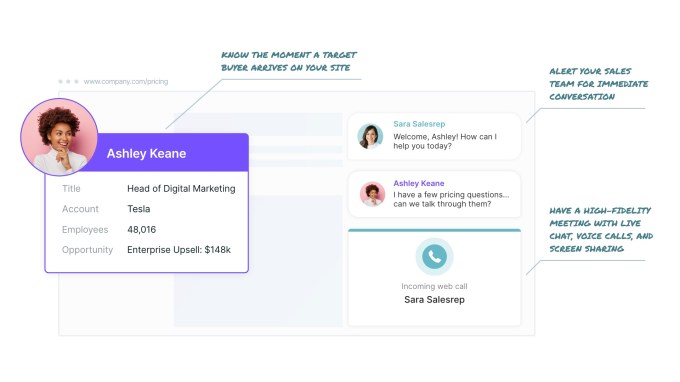Few challenges have excited technologists more than building tools to help people who are blind or visually impaired. It was Silicon Valley legend Ray Kurzweil, for example, who in 1976 launched the first commercially available text-to-speech reading device. He unveiled the $50,000 Kurzweil Reading Machine, a boxy device that covered a tabletop, at a press conference hosted by the National Federation of the Blind.
The early work of Kurzweil and many others has rippled across the commerce and technology world in stunning ways. Today’s equivalent of Kurzweil’s machine is Microsoft’s Seeing AI app, which uses AI-based image recognition to “see” and “read” in ways that Kurzweil could only have dreamed of. And it’s free to anyone with a mobile phone.
Remarkable leaps forward like that are the foundation for Sight Tech Global, a new, virtual event slated for Dec 2-3, that will bring together many of the world’s top technology and accessibility experts to discuss how rapid advances in AI and related technologies will shape assistive technology and accessibility in the years ahead.
The technologies behind Microsoft’s Seeing AI are on the same evolutionary tree as the ones that enable cars to be autonomous and robots to interact safely with humans. Much of our most advanced technology today stems from that early, challenging mission that top Silicon Valley engineers embraced to teach machines to “see” on behalf of humans.
From the standpoint of people who suffer vision loss, the technology available today is astonishing, far beyond what anyone anticipated even ten years ago. Purpose-built products like Seeing AI and computer screen readers like JAWS are remarkable tools. At the same time, consumer products including mobile phones, mapping apps, and smart voice assistants are game changers for everyone, those with sight loss not the least. And yet, that tech bonanza has not come close to breaking down the barriers in the lives of people who still mostly navigate with canes or dogs or sighted assistance, depend on haphazard compliance with accessibility standards to use websites, and can feel as isolated as ever in a room full of people.
A computer can drive a car at 70 MPH without human assistance but there is not yet any comparable device to help a blind person walk down a sidewalk at 3 MPH.
In other words, we live in a world where a computer can drive a car at 70 MPH without human assistance but there is not yet any comparable device to help a blind person walk down a sidewalk at 3 MPH. A social media site can identify billions of people in an instant but a blind person can’t readily identify the person standing in front of them. Today’s powerful technologies, many of them grounded in AI, have yet to be milled into next-generation tools that are truly useful, happily embraced and widely affordable. The work is underway at big tech companies like Apple and Microsoft, at startups, and in university labs, but no one would dispute that the work is as slow as it is difficult. People who are blind or visually impaired live in a world where, as the science fiction author William Gibson once remarked, “The future is already here — it’s just not very evenly distributed.”
That state of affairs is the inspiration for Sight Tech Global. The event will convene the top technologists, human-computer interaction specialists, product designers, researchers, entrepreneurs and advocates to discuss the future of assistive technology as well as accessibility in general. Many of those experts and technologists are blind or visually impaired, and the event programming will stand firmly on the ground that no discussion or new product development is meaningful without the direct involvement of that community. Silicon Valley has great technologies but does not, on its own, have the answers.
The two days of programming on the virtual main stage will be free and available on a global basis both live and on-demand. There will also be a $25 Pro Pass for those who want to participate in specialized breakout sessions, Q&A with speakers, and virtual networking. Registration for the show opens soon; in the meantime anyone interested may request email updates here.
It’s important to note that there are many excellent events every year that focus on accessibility, and we respect their many abiding contributions and steady commitment. Sight Tech Global aims to complement the existing event line-up by focusing on hard questions about advanced technologies and the products and experiences they will drive in the years ahead – assuming they are developed hand-in-hand with their intended audience and with affordability, training and other social factors in mind.
In many respects, Sight Tech Global is taking a page from TechCrunch’s approach to its AI and robotics events over the past four years, which were in partnership with MIT and UC Berkeley. The concept was to have TechCrunch editors ask top experts in AI and related fields tough questions across the full spectrum of issues around these powerful technologies, from the promise of automation and machine autonomy to the downsides of job elimination and bias in AI-based systems. TechCrunch’s editors will be a part of this show, along with other expert moderators.
As the founder of Sight Tech Global, I am drawing on my extensive event experience at TechCrunch over eight years to produce this event. Both TechCrunch and its parent company, Verizon Media, are lending a hand in important ways. My own connection to the community is through my wife, Joan Desmond, who is legally blind.
The proceeds from sponsorships and ticket sales will go to the non-profit Vista Center for Blind and Visually Impaired, which has been serving Silicon Valley area for 75 years. The Vista Center owns the Sight Tech Global event and its executive director, Karae Lisle is the event’s chair. We have assembled a highly experienced team of volunteers to program and produce a rich, world-class virtual event on December 2-3.
Sponsors are welcome, and we have opportunities available ranging from branding support to content integration. Please email sponsor@sighttechglobal.com for more information.
Our programming work is under way and we will announce speakers and sessions over the coming weeks. The programming committee includes Jim Fruchterman (Benetech / TechMatters) Larry Goldberg (Verizon Media), Matt King (Facebook) and Professor Roberto Manduchi (UC Santa Cruz). We welcome ideas and can be reached via programming@sighttechglobal.com
For general inquiries, including collaborations on promoting the event, please contact info@sighttechglobal.com.

Source: Tech Crunch



 Welcome TechCrunch! We’re excited about our funding announcement…” It was a little creepy, but also much more effective than my visits to other marketing technology websites, where someone usually sends me a generic sales message.
Welcome TechCrunch! We’re excited about our funding announcement…” It was a little creepy, but also much more effective than my visits to other marketing technology websites, where someone usually sends me a generic sales message.





